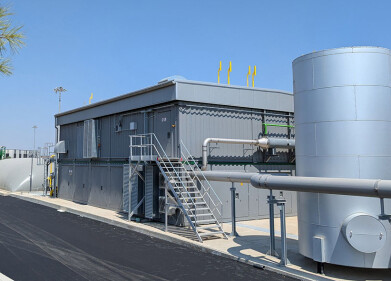Air clean up
Can Air Pollution Affect Blood Pressure in Children?
Jul 03 2021
A meta-analysis of 14 prior studies on the effect of air pollution in blood pressure in children has concluded that exposure to contaminants such as particulate matter (PM) and nitrogen dioxide (NO2) can elevate the risk of high blood pressure. What’s more, those who suffer from high blood pressure in their youth often go on to develop hypertension and heart disease later in life.
As such, the research adds to the growing body of evidence which suggests exposure to ambient air pollution during childhood can have serious repercussions far into the future of the individual concerned. It will serve to stoke the fires of environmentalists and healthcare campaigners who have long called for the government to do more to measure and manage NOx gas emissions and implement initiatives aimed at reducing PM pollution.
Clarifying the science
While the scientific and medical communities have suspected links between poor air quality and high blood pressure in the past, especially in younger members of society, previous studies have produced inconsistent and therefore inconclusive results. With that in mind, lead author on the meta-analysis Professor Yao Lu compiled 14 previous papers on European and Chinese children up to September last year and assimilated their findings.
In particular, Professor Lu confined his research to the contaminants NO2, PM2.5 and PM10. As our ability to monitor concentrations of these two latter pollutants has advanced in recent years, so too has our understanding of the damage that it can wreak on the human body. Professor Lu’s meta-analysis provided yet more evidence of the substances’ potentially harmful effects.
Conclusive outcomes
The conclusions of Professor Lu’s research point to a direct link between exposure to air pollution and high blood pressure in children aged between 5 and 12 years old. There was a significant association of short-term exposure to PM10 and elevated systolic blood pressure, while long-term exposure to all three contaminants were also found to result in the same result.
“To reduce the impact of environmental pollution on blood pressure in children and adolescents, efforts should be made to reduce their exposure to environmental pollutants,” explained Professor Lu. “Additionally, it is also very important to routinely measure blood pressure in children and adolescents, which can help us identify individuals with elevated blood pressure early.”
Long-term effects
Professor Lu was quick to point out that his analysis did not legislate for the possible interaction of different contaminants in the same airstream and thus could not be extrapolated to make assumptions on a global scale. However, his findings are certainly concerning for the millions of youths who live in highly-polluted urban areas of Europe – and not just for their current health.
It has been well-established that those who experience high blood pressure in their younger years are more susceptible to contracting heart disease or suffering from hypertension in their adulthood. As such, the study suggests that exposure to the named contaminants during childhood could have grave repercussions on the human body well after the fact.
Events
Mar 18 2025 Expo Santa Fe, Mexico
Mar 18 2025 Moscow, Russia
Mar 19 2025 Manila, Philippines
Mar 20 2025 Guangzhou, China
Mar 24 2025 National Harbour, MD, USA














